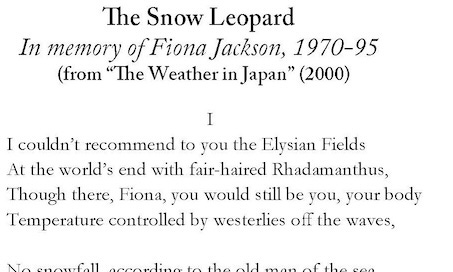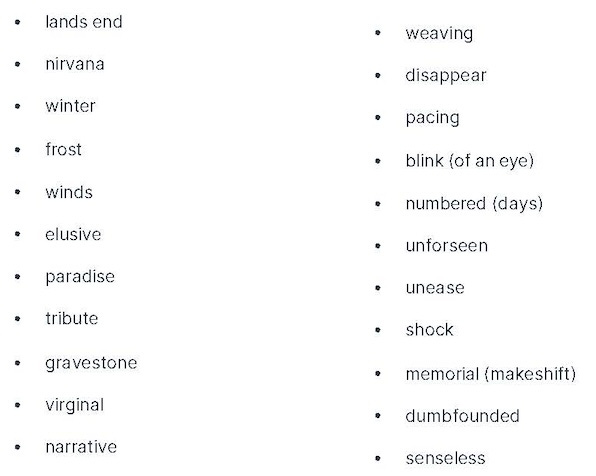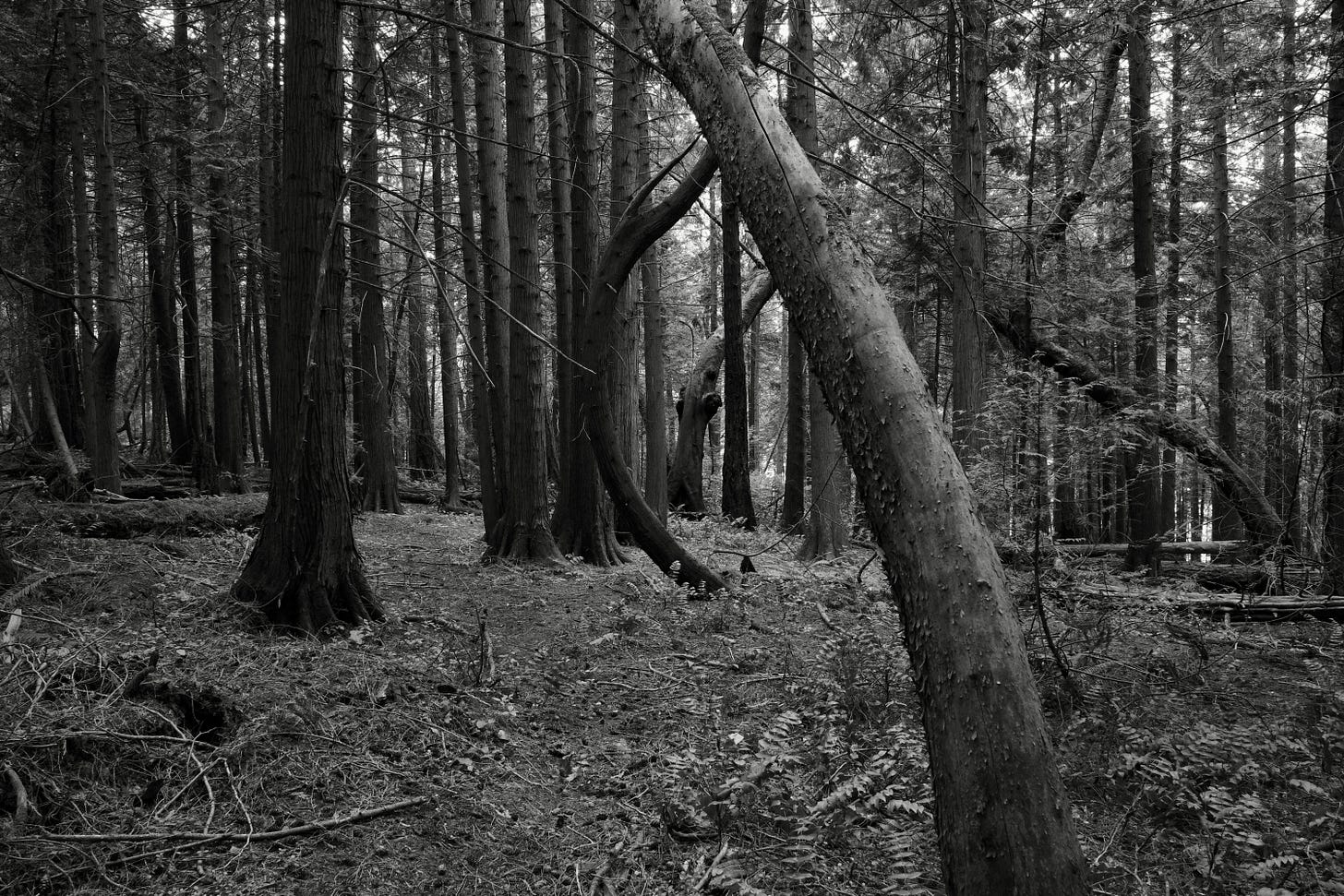The bittersweet sadness of the wind in the trees
Mike,
As I was re-reading the poem I selected for round 4, I began to think about the mastery Longley uses in showing the reader how the story unfolds, rather than telling them what the story is. I feel that if Longley was conducting an orchestra, he might tell the basses that in the beginning of the second movement he wants to hear the faint rumbling of the midnight train build by the end to something immediate and ominous, and to the strings he might tell them to give him the bittersweet sadness of the wind in the trees. He would not use terms like crescendo, fortissimo, or pizzicato that directly tell the musicians what he wants, rather he would show them in a way that conveys what the piece should feel like as it tells its story.
Here’s the poem I chose for round 4:
I’m struck by the fact that we both chose poems about untimely death without having spoken to one another.
In showing us the story of Fiona Jackson and her untimely death Longley begins rather unconventionally by indirectly saying he cannot recommend heaven to her, that he believes she would not like it even though she would still be herself, that her comfort would be assured. Although Longley will never tell us directly a single thing about Fiona in this poem, he has already shown us something key - Fiona liked the wildness of life, the uncomfortable along with the comfortable and perhaps winter was her favourite season.
He continues by listing why heaven would not be a comfortable place for her. No snow, no cold, no inclement weather, no possibility to leave the comfort of a warm home to go out into the cold and snow and have the joy of building a snowman. I can hear Fiona laughing at the fun of it while banging her hands and feet to ward off the cold, then running back into the house to warm up and enjoy time with family. He’s revealing Fiona by letting us build our own sense of her. And he’s previewing the circumstances of how Fiona died.
He goes on to peel back the layers of the onion to show us what happened. He’s adding flowers to those at a roadside memorial where her car left the road and crashed. Why did it leave the road? He showed us the why already - it’s winter and the snow, and ice and frost that Fiona loved made the road unsafe as she drove home. Longley trusts us to connect the dots, to fill in the narrative. And he reveals something else. Like many of the people who lay flowers at these memorial sites, his connection to the deceased is a thin thread, a single conversation at her home, while her cat was making its presence known by weaving in and out between their legs. Or perhaps the cat was a topic that kept coming up during their conversation. One never knows with cats; they ignore the humans until they decide to demand attention. The imagery of such a poignant, brief moment in a life is powerful.
Did this conversation take place on a day when Longley was visiting the family, when Fiona had been out in the wind and snow and come in before Longley had taken his leave? As a reader, I can build this narrative in several ways from what Longley has shown me without affecting the basic integrity of the story.
And finally comes the much desired resolution. Fiona is up amongst the clouds, a snow leopard in a heaven that includes the bite of the snow and the wind that she loved.
I made this list of words to work from:
and here’s the photo I made. As you can see, that visual of a cat weaving in and out of legs/conversation struck a deep chord for me.





